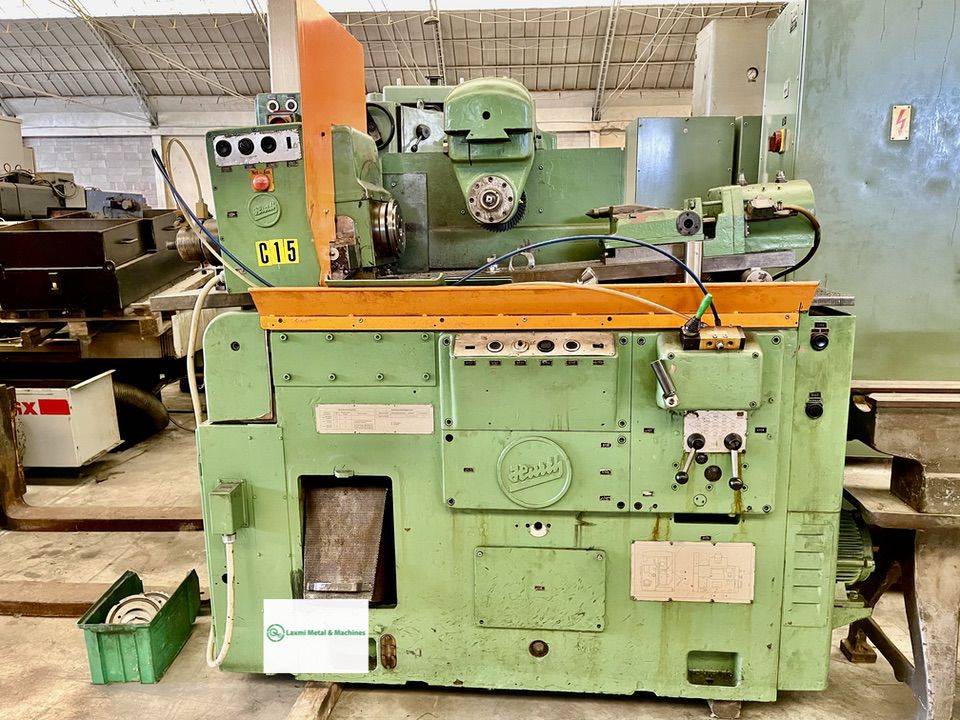Milling machines are versatile tools used in metalworking, woodworking, and other industries to cut and shape materials. These machines can perform a range of operations, from simple drilling and cutting to complex contouring and shaping. In this article, we will discuss the basics of Fräsmaschinen, their types, and applications.
What is a Milling Machine?
Der Fräse is one of the most widely used machines that can be found in modern manufacturing industries. A Fräse is a power-driven tool that uses a rotating cutter to remove material from a workpiece. The cutter is mounted on an arbor, which is supported by a spindle. The workpiece is clamped onto a table, and the cutter is moved in different directions to produce the desired shape. Milling machines can perform a variety of operations, such as drilling, boring, reaming, tapping, and slotting.
A little bit of history
Even though it’s difficult to place in time the invention of the Fräse, the first time we know these machines were used is the 17th century. At that time, Fräsmaschinen were used by clockmakers to cut out wheels. Later, in the 18th century, it was the American inventor Eli Withney that gave birth to the first reliable Fräse, with the purpose of mass producing gun parts.
After years of improvements, mostly due to the American engineer Joseph R. Brown, it was in the 1940s that the Fräse became the machine we know nowadays. Following the rise of automation, pre-programmed machines began to substitute manual workers that used to operate the machine itself.
Today we can count on many different types of Fräsmaschinen and there are very few things that we can’t do with them. Let’s take a look.
Types of Milling Machines
There are several types of Fräsmaschinen available, each designed for specific tasks. These are the most common types of Fräsmaschinen that Laxmi can provide:
- Vertical Milling Machine: In a vertical milling machine, the spindle axis is perpendicular to the table. This machine is suitable for performing drilling, boring, and tapping operations.
- Horizontal Milling Machine: In a horizontal milling machine, the spindle axis is parallel to the table. This machine is suitable for cutting grooves, slots, and other complex shapes.
- Universal Milling Machine: A universelle Fräsmaschine has a swivel table that allows the cutter to be adjusted at different angles. This machine can perform both horizontal and vertical milling operations.
- Bed Milling Machine: In a Bettfräsmaschine, the table is mounted on a bed that can be moved in different directions. This machine is suitable for heavy-duty milling operations.
- Key-way Milling Machine: this Fräse is made to process keys.
- Rack Cutting Milling Machine: Diese Maschinen werden zum Schneiden von Zahnstangen verwendet, die zum Umwandeln einer Drehbewegung in eine lineare Bewegung verwendet werden;
- CNC Milling Machine: CNC stands for Computer Numerical Control. These machines can be programmed and managed automatically, to remove materials from a workpiece more accurately.
Applications of Milling Machines
Milling machines are used in a wide range of industries, from automotive and aerospace to furniture and construction. Some of the common applications of Fräsmaschinen are:
- Production of Precision Parts: Fräsmaschinen can be used to produce complex and precise parts for various industries, including automotive and aerospace.
- prototyping: these machines are used to create prototypes of products and components. This helps manufacturers to test their designs and make necessary modifications before final production.
- repair and maintenance: these machines are used for repairing and maintaining machinery and equipment. They can be used to replace damaged parts, repair threads, and other components.
- woodworking: these machines are also used in the woodworking industry to create intricate designs and shapes in wood.
- sculpture: these machines are used by sculptors to create complex and intricate sculptures from a variety of materials, including stone, metal, and wood.
Advantages of Milling Machines
Milling machines offer several advantages over other machining tools. Some of these advantages include:
- versatility: Fräsmaschinen can perform a range of operations, including drilling, boring, reaming, and tapping.
- precision: they can produce precise and accurate parts with tight tolerances.
- speed: Fräsmaschinen can operate at high speeds, allowing for fast production and high efficiency.
- cost-effective: they can produce large quantities of parts at a low cost per unit.
Used Milling Machines
Laxmi overhaul and renew used Fräsmaschinen with care, to offer you a product that can last for many years. With the passion that distinguishes us, we can answer all your questions, with non obligation or additional costs, and help you choose the best option for your needs.
Kontaktiere uns by calling +91 9896105058 (India) or +39 3487338048 (Italy), filling the form in our contact page, or through our online chat.


